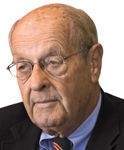Article
Nurse practitioners, physician assistants will help alleviate urology work force shortage, according to AUA
Thomas J. Rohner, Jr, MD, chairman of the AUA's Urology Work Force Task Force, explains the scope of the work force shortage and the goals of the non-physician provider initiative.
Like many medical specialties, urology is experiencing a work force shortage, and some say the problem has reached the crisis stage. The AUA is now turning to non-physician providers to help alleviate the shortage. In this interview, Thomas J. Rohner, Jr, MD, chairman of the AUA's Urology Work Force Task Force, explains the scope of the problem and the goals of the non-physician provider initiative. Dr. Rohner is professor emeritus of urology at the Penn State College of Medicine, Hershey Medical Center, Hershey PA. He was interviewed by Urology Times Editorial Consultant Philip M. Hanno, MD, MPH, professor of urology at the University of Pennsylvania, Philadelphia.
Q. How did the Urology Work Force Task Force come into being?
A. During the 2007 AUA Board of Directors meeting, the question arose as to whether there was a shortage of urologists. Some people felt strongly that there was a shortage. Some people described it as a crisis. The AUA president at the time, Dr. Paul Schellhammer, said we should create a small ad hoc Work Force Task Force to look into this problem.

Q. How big is the work force shortage in general and in urology?
A. In talking to other medical specialty organizations, we found that essentially every specialty thinks it has a work force shortage, especially the general surgeons. If you believe Dr. Richard Cooper from the University of Pennsylvania's Leonard Davis Institute of Health Economics, the United States is currently a couple of hundred thousand physicians short. I don't honestly know how many more urologists we would need to train. As you know, we train about 250 per year.
Lots of projections were done in the past. As recently as 10 years ago, some people thought we had just the right number, maybe even a surplus. Perhaps training 300 urologists per year would be appropriate. I don't really know what that number is, and I haven't seen any projections of what that number should be.
Q. What were the goals of the task force in addressing this problem?
A. In 2008, then-AUA President Dr. John Barry provided the members of the task force with three assignments: reach a consensus about whether there was, in fact, a work force shortage in urology; if we concluded that a shortage exists, come up with five specific recommendations that the AUA could do about it; and identify the resources that would be involved in each recommendation.





